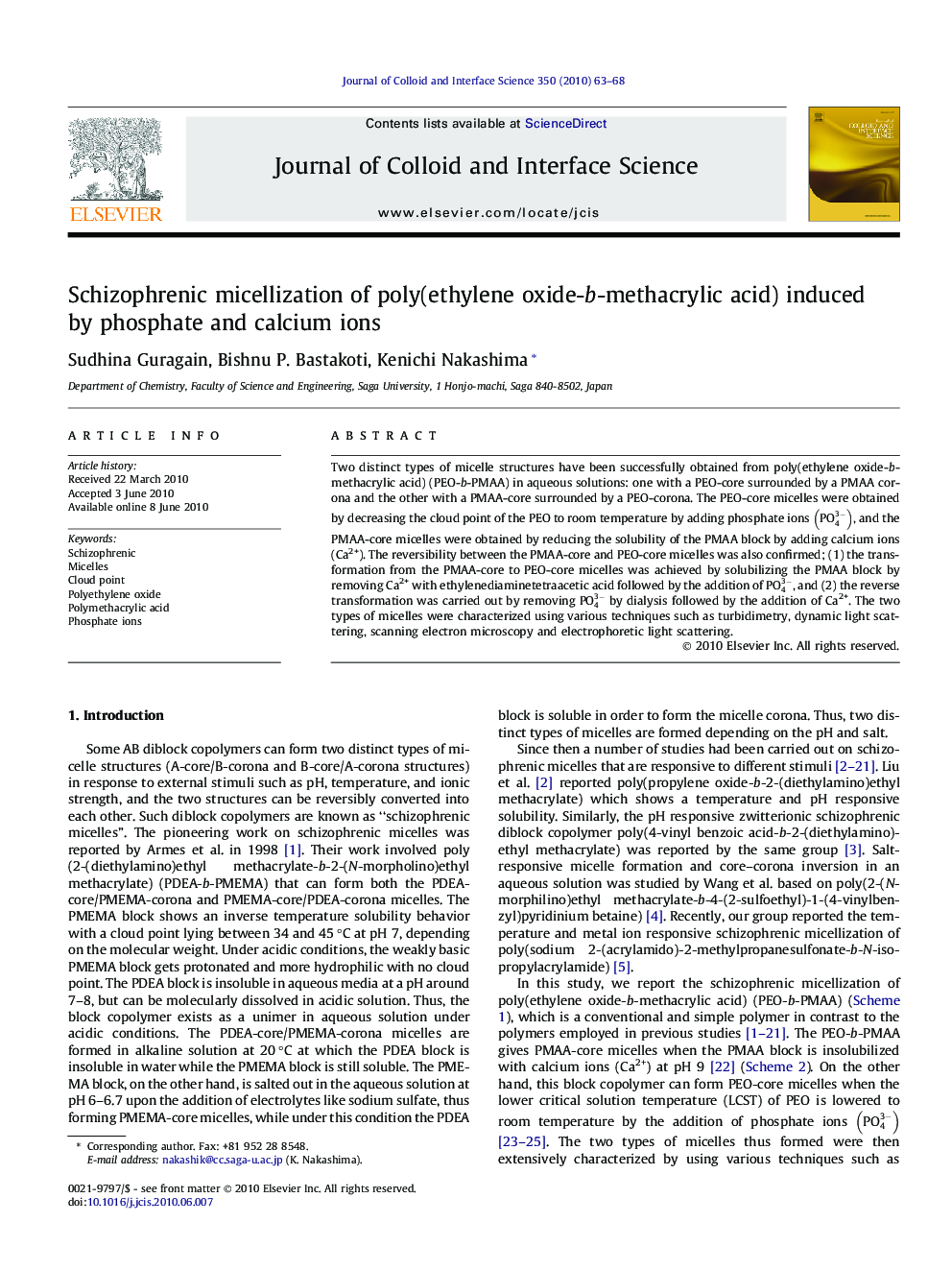| Article ID | Journal | Published Year | Pages | File Type |
|---|---|---|---|---|
| 609468 | Journal of Colloid and Interface Science | 2010 | 6 Pages |
Two distinct types of micelle structures have been successfully obtained from poly(ethylene oxide-b-methacrylic acid) (PEO-b -PMAA) in aqueous solutions: one with a PEO-core surrounded by a PMAA corona and the other with a PMAA-core surrounded by a PEO-corona. The PEO-core micelles were obtained by decreasing the cloud point of the PEO to room temperature by adding phosphate ions PO43-, and the PMAA-core micelles were obtained by reducing the solubility of the PMAA block by adding calcium ions (Ca2+). The reversibility between the PMAA-core and PEO-core micelles was also confirmed; (1) the transformation from the PMAA-core to PEO-core micelles was achieved by solubilizing the PMAA block by removing Ca2+ with ethylenediaminetetraacetic acid followed by the addition of PO43-, and (2) the reverse transformation was carried out by removing PO43- by dialysis followed by the addition of Ca2+. The two types of micelles were characterized using various techniques such as turbidimetry, dynamic light scattering, scanning electron microscopy and electrophoretic light scattering.
Graphical abstractPEO-b-PMAA gives PMAA-core micelles when the PMAA block is made insoluble by the addition of Ca2+ and forms PEO-core micelles when the cloud point of PEO is lowered to room temperature by the addition of PO43-.Figure optionsDownload full-size imageDownload high-quality image (56 K)Download as PowerPoint slideResearch highlights► Addition of Ca2+ to the aqueous solution of PEO-b-PMAA forms PMAA-core micelles. ► Addition of EDTA to the PMAA-core micelles leads to the formation of unimer. ► Addition of PO43− to the unimer solution gives micelles with PEO-core. ► Removal of PO43− by dialysis leads back to the formation of unimer.
